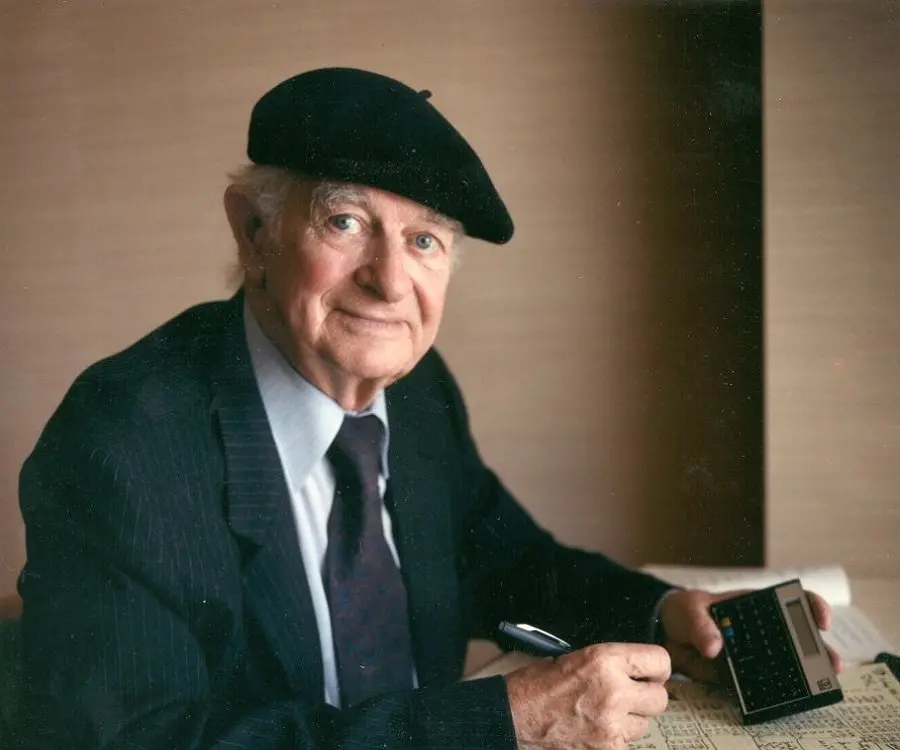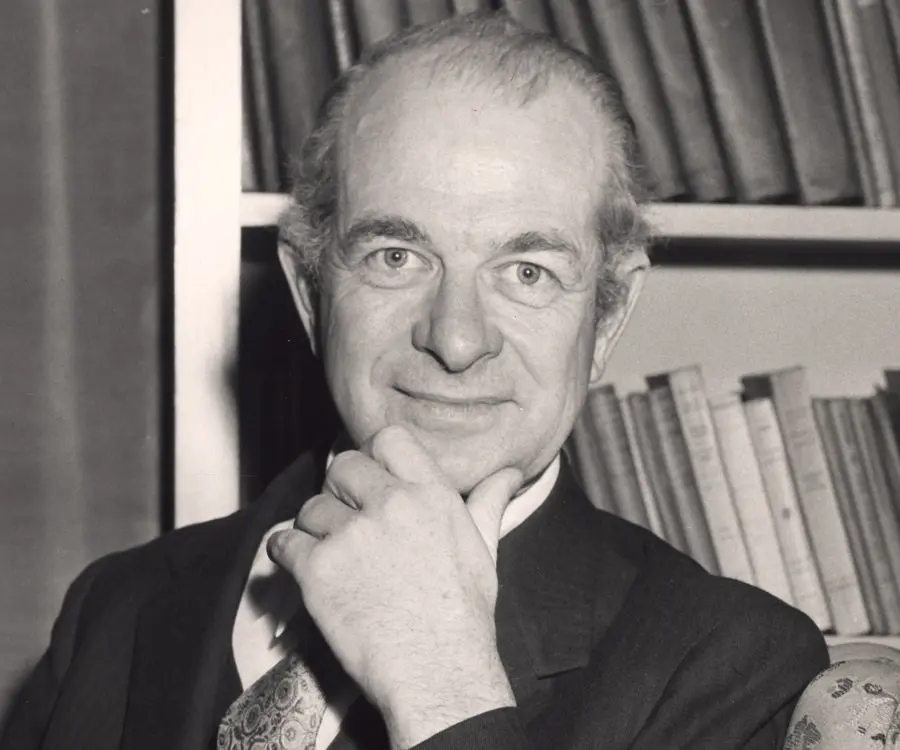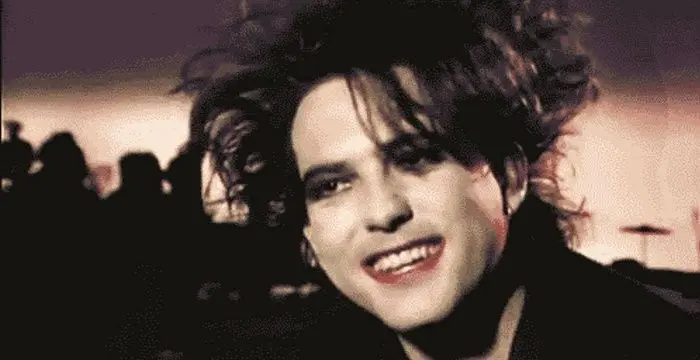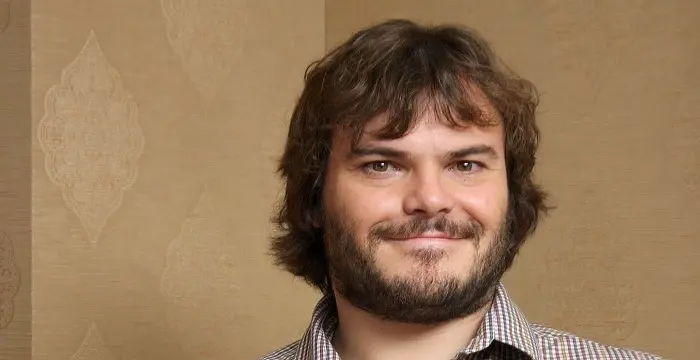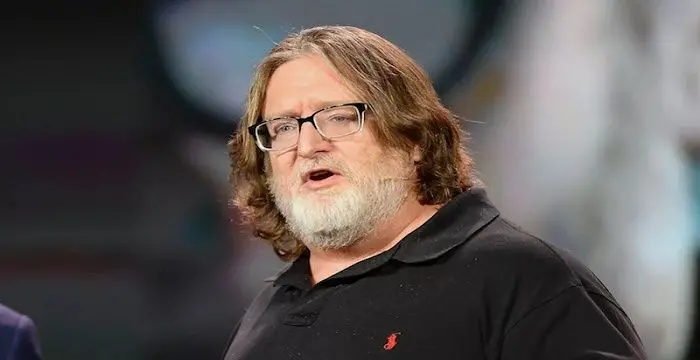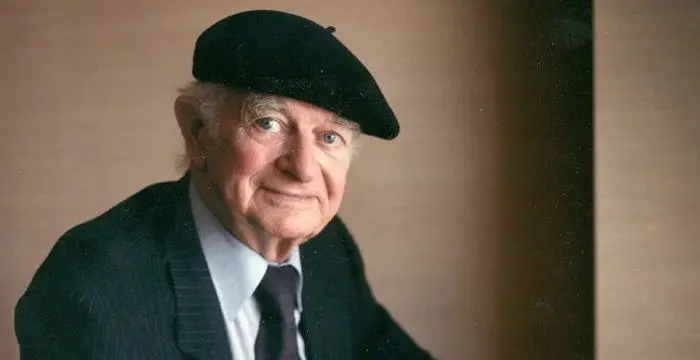
Linus Pauling - Biochemists, Career and Family
Linus Pauling's Personal Details
Linus Pauling was a scientist, chemist, bio-chemist and peace activist best known for his work in the field of ‘quantum chemistry’ and ‘molecular biology’
| Information | Detail |
|---|---|
| Birthday | February 28, 1901 |
| Died on | August 19, 1994 |
| Nationality | American |
| Famous | Atheists, Scientists, Chemists, Biochemists |
| Spouses | Ava Helen Pauling |
| Childrens | Linus Jr., Peter Edward Crellin) |
| Universities |
|
| Birth Place | Portland |
| Gender | Male |
| Father | Herman Henry William Pauling (1876–1910) |
| Mother | Lucy Isabelle |
| Sun Sign | Pisces |
| Born in | Portland |
| Famous as | Chemist, Biochemist |
| Died at Age | 93 |
// Famous Biochemists
Robert Huber
Robert Huber is a German biochemist and Nobel Laureate. Check out this biography to know about his childhood, life, achievements, works & timeline.
Charles Best
Charles Best was a great scientist and a renowned physiologist who is remembered for being the co-discoverer of insulin. Read this biography to learn about his profile, childhood, life and timeline.
Isaac Asimov
Isaac Asimov was an American professor of biochemistry and a renowned author of science fiction and popular science books. Read this biography to know more about his life.
Linus Pauling's photo
Who is Linus Pauling?
One of the greatest scientists of the 20th century and the most influential chemist in history, Linus Pauling is the only person to have been awarded two unshared Nobel Prizes. Popularly referred to as the ‘founding father of molecular chemistry’, Pauling’s findings in the field of biological sciences and medicine have provided the foundation for modern biotechnology. As a man of diverse accomplishments, he passionately spoke out against the development of nuclear weapons and the dangers associated with it, while he continued to pursue an amazing array of scientific interests. He was a great orator and gave numerous public speeches on the need for abandoning nuclear testing and was often invited as a speaker at conferences, political rallies, commencements, and media programs. This multi-faceted genius had a zest for communication and the ability to explain complex medical and scientific information in simple terms that a lay man could comprehend. He authored numerous articles and books on various topics like peace activism, health and science. Some of his well-known books include ‘Vitamin C and the Common Cold’, ‘Cancer and Vitamin C’ and ‘How to Live Longer and Feel Better’. To learn more interesting facts about his personal life, peace advocacy campaigns and other scientific achievements, scroll down and continue to read this biography.
// Famous Atheists
Morgan Freeman
Morgan Freeman is an Academy Award winning actor known for his work in movies like ‘Street Smart’, ‘Driving Miss Daisy’ and ‘Million Dollar Baby’. This biography provides detailed information about his childhood, life, achievements, works & timeline.
Robert Smith
Robert Smith is an English musician and the lead singer of the British rock band, ‘The Cure.’ This biography of Robert Smith gives detailed information on his profile, childhood, life and timeline.
Jack Black
Jack Black is a renowned American actor-producer and voice artist. Explore this biography to learn more about his profile, childhood, career and timeline
Childhood & Early Life
Linus Pauling was born in Portland, Oregon to Herman Henry William Pauling, a bread salesman and Lucy Isabelle ‘Belle’ Darling. The family lived together in a humble one room apartment.
After his sister Pauline was born, the family moved to Salem, Oregon as his father took up a salesman job at the Skidmore Drug Company.
During his younger days he was a voracious reader and was also fascinated by chemistry experiments, he even set up a laboratory with the help of an older friend.
Before he attended Oregon State University in 1917, he took a number of odd jobs—worked part time at a grocery store, as an apprentice machinist and also set up a photography laboratory with his friends—in order to earn enough money to fund his college expenses.
In 1922, he graduated from the Oregon State University with a degree in chemical engineering, after which he attended the California Institute of Technology.
While he was pursuing his graduate studies, he published seven papers on the crystal structure of minerals and in 1925 he received a Ph.D. in ‘physical chemistry and mathematical physics, summa cum laude’
Career
In 1927, he became the assistant professor of ‘theoretical chemistry’ at the California Institute of Technology and during his five year stay at the institute he published fifty papers and invented the ‘Pauling’s rules’.
In 1930, he travelled to Europe to study the use of ‘electrons’ in ‘diffraction’ and after he returned, he built an instrument called the ‘electron diffraction instrument’ to study the ‘molecular structure’ of chemical substances.
In 1932, he published a paper on the concept of ‘hybridization of atomic orbitals’ and analysed the ‘tetravalency’ of the ‘carbon atom’.
He introduced the concept of ‘electronegativity’ and established the ‘Pauling Electronegativity Scale’, a tool to predict ‘bond between atoms and molecules’.
During the World War II, he did not work on any military projects and refused to work in the ‘Manhattan Project’, a research and development project that produced the first atomic bomb.
In 1946, he became a member of the Emergency Committee of Atomic Scientists, an organisation that warned the public of the hazards associated with the development of nuclear weapons.
In 1949, along with fellow scientists he authored a paper titled ‘Sickle Cell Anemia, a Molecular Disease’, which was published in the journal ‘Science’.
In 1955, along with fellow colleagues from the scientific community like Albert Einstein and Bertrand Russell he signed the ‘Russell-Einstein Manifesto’, an appeal to seek peaceful resolutions and put an end to nuclear weapons.
In 1958, he participated in the ‘Baby Tooth Survey’, that demonstrated the dangers of above-ground nuclear testing. The same year, along with his wife he presented the United Nations a petition signed by 11,000 scientists to end nuclear weapon testing.
During the 1960s, he opposed America’s involvement in the Vietnam War, for this cause he made many public speeches and signed protest letters and petitions.
In 1965, he authored a research paper titled, ‘Close-Packed Spheron Model of the atomic nucleus’, which was published in some of the well-respected journals including ‘Science’.
In 1970, his book titled ‘Vitamin C and the Common Cold’ was published. The book was about the benefits of the intake of Vitamin C.
He continued to work as a peace activist and in 1974, co-founded the ‘International League of Humanists’, an organisation with the primary objective of promoting peace and human rights.
In 1986, he authored another edition on the health benefits of vitamin C titled, ‘How to live longer and Feel Better’. The book advocated the intake of high dosages of Vitamin C’.
Major Works
Published in 1939, his book ‘The Nature of the Chemical Bond’ is one of the most influential books ever published in the field of chemistry and it has been cited as a reference in many important journals and scientific papers.
He founded the concept of ‘molecular disease’; these discoveries inspired research work on many more such disorders and is the basis of today’s ‘human genome research’.
Awards & Achievements
In 1926, he was awarded the Guggenheim Fellowship to study under German physicist Arnold Sommerfeld in Munich, Danish physicist Niels Bohr in Copenhagen and Austrian physicist Erwin Schr�dinger in Z�rich.
In 1931, he was awarded the Langmuir Prize by the American Chemical Society for the most significant work in ‘pure science’ by a person 30 years of age or younger.
In 1954, he was awarded the Nobel Prize in Chemistry "for his research into the nature of the chemical bond and its application to the elucidation of the structure of complex substances.".
In 1962, he was awarded the Nobel Peace Prize for his ‘peace activism’.
In 1970, he was awarded the International Lenin Peace Prize.
Personal Life & Legacy
On June 17, 1923 he married Ava Helen Miller and the marriage lasted until her death in 1981. The couple had three sons together.
Even though he was raised as a member of the Lutheran Church, he later became a member of the Unitarian Church and declared that he was an atheist, two years before his death.
At the age of forty, he was diagnosed with Bright's disease, a kidney disease.
At the age of 93, he died of prostate cancer at his home in Big Sur, California.
On March 6, 2008, a 41 cent stamp was released in his honour by the United States Postal Service.
Trivia
He is the only person to win two undivided Nobel Prizes.
This Nobel Peace Prize winning scientist saved $200 dollars from all the odd jobs he did in order to fund his education, but spent most of his hard earned savings on a girl named Irene, who he fell in love with at University.
This scientist and Nobel Prize winner was denied a passport to London by the American government because he spoke publicly on the dangers associated with the nuclear weapons.
// Famous Chemists
Henry Cavendish
Henry Cavendish was a theoretical chemist and physicist, renowned for discovery of hydrogen and calculation of the mass of earth. To know more about his childhood, profile, timeline and career read on
Walter Kohn
Nobel Laureate Walter Kohn was an Austrian-born American theoretical chemist and physicist. Check out this biography to know about his childhood, life, achievements, works & timeline.
Jabir Ibn Hayyan
Jabir Ibn Hayyan was a medieval era polymath. Check out this biography to know about his life, works and achievements.
Linus Pauling's awards
| Year | Name | Award |
|---|---|---|
Other | ||
| 0 | New York Section | |
| 0 | American Chemical Society | |
| 1946 | Willard Gibbs Award | |
| 0 | Chicago section of the American Chemical Society | |
| 1947 | Davy Medal | |
| 0 | Royal Society | |
| 1947 | T. W. Richards Medal | |
| 0 | Northeastern Section of the American Chemical Society | |
| 1948 | Presidential Medal for Merit | |
| 1951 | Gilbert N. Lewis medal | |
| 0 | California section of the American Chemical Society | |
| 1952 | Pasteur Medal | |
| 0 | Biochemical Society of France | |
| 1954 | Nobel Prize in Chemistry | |
| 1955 | Addis Medal | |
| 0 | National Nephrosis Foundation | |
| 1955 | John Phillips Memorial Award | |
| 0 | American College of Physicians | |
| 1956 | Avogadro Medal | |
| 0 | Italian Academy of Science 1957 - Paul Sabatier Medal | |
| 1957 | Pierre Fermat Medal in Mathematics (awarded for only the sixth time in three centuries) | |
| 1957 | International Grotius Medal | |
| 1961 | Humanist of the Year | |
| 0 | American Humanist Association | |
| 1961 | Gandhi Peace Award by Promoting Enduring Peace | |
| 1962 | Nobel Peace Prize | |
| 1965 | Medal | |
| 0 | Academy of the Rumanian People's Republic | |
| 1966 | Linus Pauling Award | |
| 1966 | Silver Medal | |
| 0 | Institute of France | |
| 1966 | Supreme Peace Sponsor | |
| 0 | World Fellowship of Religion | |
| 1967 | Washington A. Roebling Medal | |
| 0 | Mineralogical Society of America | |
| 1972 | Lenin Peace Prize | |
| 1974 | National Medal of Science by President Gerald R. Ford of the United States | |
| 1978 | Lomonosov Gold Medal | |
| 0 | Presidium of the Academy of the USSR | |
| 1979 | NAS Award in Chemical Sciences | |
| 0 | National Academy of Sciences | |
| 1981 | John K. Lattimer Award | |
| 0 | American Urological Association | |
| 0 | 1984 Priestley Medal | |
| 0 | American Chemical Society | |
| 1984 | Award for Chemistry | |
| 0 | Arthur M. Sackler Foundation | |
| 1986 | Lavoisier Medal by Fondation de la Maison de la Chimie | |
| 1987 | Award in Chemical Education | |
| 0 | American Chemical Society | |
| 1989 | Vannevar Bush Award | |
| 0 | National Science Board | |
| 1990 | Richard C. Tolman Medal | |
| 0 | American Chemical Society Southern California Section | |
| 0 | ||
| 0 | 1931 - Irving Langmuir Award | |
| 0 | American Chemical Society | |
| 0 | 1941 - Nichols Medal | |
Linus Pauling biography timelines
- // 28th Feb 1901Linus Pauling was born in Portland, Oregon to Herman Henry William Pauling, a bread salesman and Lucy Isabelle ‘Belle’ Darling. The family lived together in a humble one room apartment.
- // 1917Before he attended Oregon State University in 1917, he took a number of odd jobs—worked part time at a grocery store, as an apprentice machinist and also set up a photography laboratory with his friends—in order to earn enough money to fund his college expenses.
- // 1922In 1922, he graduated from the Oregon State University with a degree in chemical engineering, after which he attended the California Institute of Technology.
- // 1923 To 1981On June 17, 1923 he married Ava Helen Miller and the marriage lasted until her death in 1981. The couple had three sons together.
- // 1925While he was pursuing his graduate studies, he published seven papers on the crystal structure of minerals and in 1925 he received a Ph.D. in ‘physical chemistry and mathematical physics, summa cum laude’
- // 1926In 1926, he was awarded the Guggenheim Fellowship to study under German physicist Arnold Sommerfeld in Munich, Danish physicist Niels Bohr in Copenhagen and Austrian physicist Erwin Schr�dinger in Z�rich.
- // 1927In 1927, he became the assistant professor of ‘theoretical chemistry’ at the California Institute of Technology and during his five year stay at the institute he published fifty papers and invented the ‘Pauling’s rules’.
- // 1930In 1930, he travelled to Europe to study the use of ‘electrons’ in ‘diffraction’ and after he returned, he built an instrument called the ‘electron diffraction instrument’ to study the ‘molecular structure’ of chemical substances.
- // 1931In 1931, he was awarded the Langmuir Prize by the American Chemical Society for the most significant work in ‘pure science’ by a person 30 years of age or younger.
- // 1932In 1932, he published a paper on the concept of ‘hybridization of atomic orbitals’ and analysed the ‘tetravalency’ of the ‘carbon atom’.
- // 1939Published in 1939, his book ‘The Nature of the Chemical Bond’ is one of the most influential books ever published in the field of chemistry and it has been cited as a reference in many important journals and scientific papers.
- // 1946In 1946, he became a member of the Emergency Committee of Atomic Scientists, an organisation that warned the public of the hazards associated with the development of nuclear weapons.
- // 1949In 1949, along with fellow scientists he authored a paper titled ‘Sickle Cell Anemia, a Molecular Disease’, which was published in the journal ‘Science’.
- // 1954In 1954, he was awarded the Nobel Prize in Chemistry "for his research into the nature of the chemical bond and its application to the elucidation of the structure of complex substances.".
- // 1955In 1955, along with fellow colleagues from the scientific community like Albert Einstein and Bertrand Russell he signed the ‘Russell-Einstein Manifesto’, an appeal to seek peaceful resolutions and put an end to nuclear weapons.
- // 1958In 1958, he participated in the ‘Baby Tooth Survey’, that demonstrated the dangers of above-ground nuclear testing. The same year, along with his wife he presented the United Nations a petition signed by 11,000 scientists to end nuclear weapon testing.
- // 1962In 1962, he was awarded the Nobel Peace Prize for his ‘peace activism’.
- // 1965In 1965, he authored a research paper titled, ‘Close-Packed Spheron Model of the atomic nucleus’, which was published in some of the well-respected journals including ‘Science’.
- // 1970In 1970, his book titled ‘Vitamin C and the Common Cold’ was published. The book was about the benefits of the intake of Vitamin C.
- // 1970In 1970, he was awarded the International Lenin Peace Prize.
- // 1974He continued to work as a peace activist and in 1974, co-founded the ‘International League of Humanists’, an organisation with the primary objective of promoting peace and human rights.
- // 1986In 1986, he authored another edition on the health benefits of vitamin C titled, ‘How to live longer and Feel Better’. The book advocated the intake of high dosages of Vitamin C’.
- // 19th Aug 1994At the age of 93, he died of prostate cancer at his home in Big Sur, California.
// Famous Scientists
Juliane Koepcke
Juliane Koepcke is a German-Peruvian biologist, who was the lone survivor among the 92 passengers and crew of the ill-fated LANSA Flight 508 that crashed in the Peruvian rainforest on 24 December 1971. Know more about her life in this biography.
Henry Cavendish
Henry Cavendish was a theoretical chemist and physicist, renowned for discovery of hydrogen and calculation of the mass of earth. To know more about his childhood, profile, timeline and career read on
Konstantin Tsiolkovsky
Konstantin Tsiolkovsky was a Russian rocket scientist and a pioneer of astronautics. This biography provides detailed information about his childhood, family, personal life, career, achievements, etc.
Gabe Newell
Gabe Newell is an American computer programmer and businessman, best known as the co-founder of ‘Valve Corporation.’ This biography provides detailed information about his childhood, family, personal life, career, etc.
Grigori Perelman
Grigori Perelman is a Russian mathematician who is best known for his contributions to Riemannian geometry and geometric topology. Check out this biography to know about his childhood, family life, achievements and fun facts about him.
Eduardo Saverin
Eduardo Luiz Saverin is a Brazilian internet entrepreneur and investor. This biography profiles his childhood, life, career, achievements, and timeline
Linus Pauling's FAQ
What is Linus Pauling birthday?
Linus Pauling was born at 1901-02-28
When was Linus Pauling died?
Linus Pauling was died at 1994-08-19
Where was Linus Pauling died?
Linus Pauling was died in Big Sur
Which age was Linus Pauling died?
Linus Pauling was died at age 93
Where is Linus Pauling's birth place?
Linus Pauling was born in Portland
What is Linus Pauling nationalities?
Linus Pauling's nationalities is American
Who is Linus Pauling spouses?
Linus Pauling's spouses is Ava Helen Pauling
Who is Linus Pauling childrens?
Linus Pauling's childrens is Linus Jr., Peter Edward Crellin)
What was Linus Pauling universities?
Linus Pauling studied at Oregon State University ( known then as Oregon Agricultural College), Washington High School
Who is Linus Pauling's father?
Linus Pauling's father is Herman Henry William Pauling (1876–1910)
Who is Linus Pauling's mother?
Linus Pauling's mother is Lucy Isabelle
What is Linus Pauling's sun sign?
Linus Pauling is Pisces
How famous is Linus Pauling?
Linus Pauling is famouse as Chemist, Biochemist



